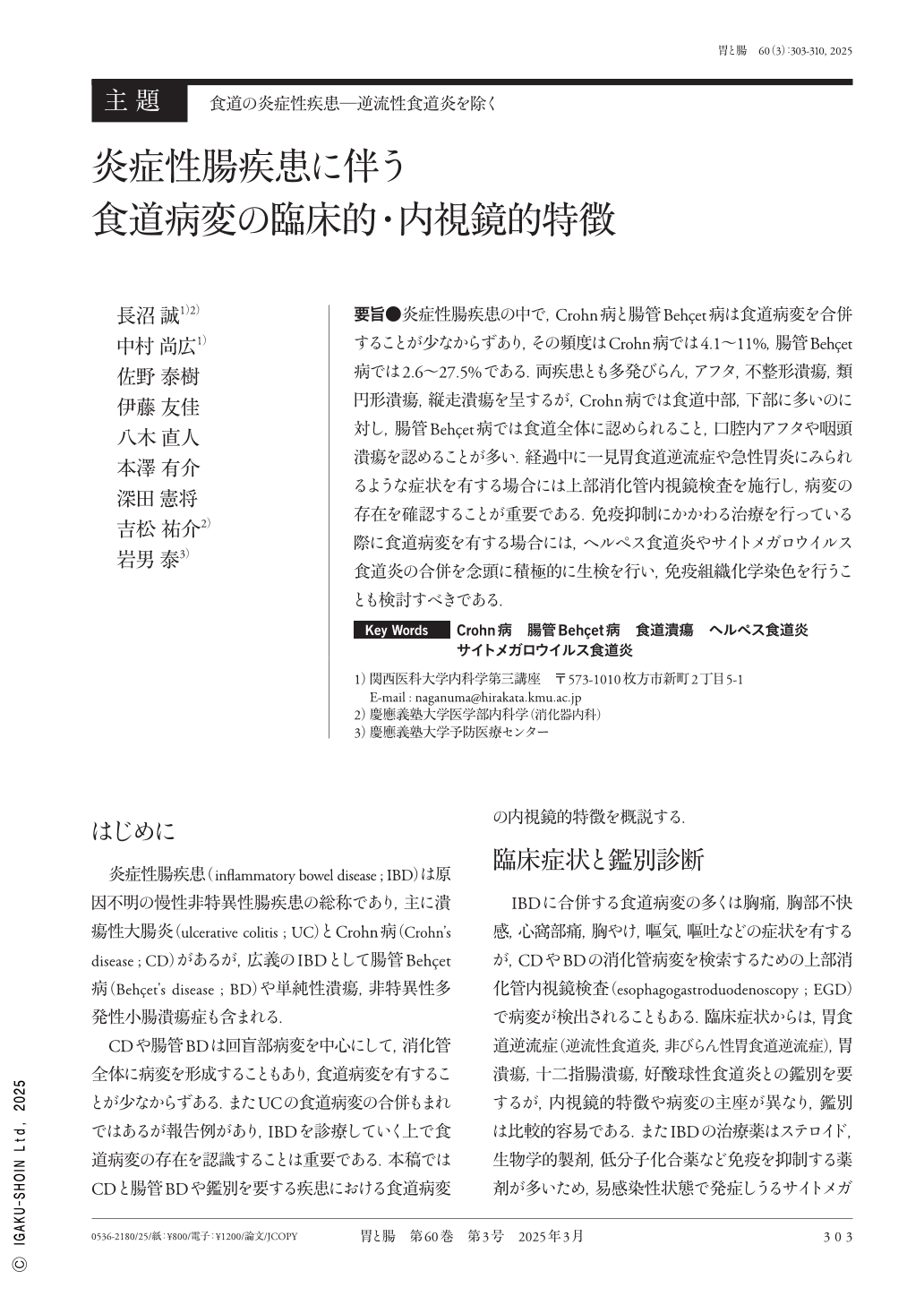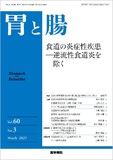Japanese
English
- 有料閲覧
- Abstract 文献概要
- 1ページ目 Look Inside
- 参考文献 Reference
要旨●炎症性腸疾患の中で,Crohn病と腸管Behçet病は食道病変を合併することが少なからずあり,その頻度はCrohn病では4.1〜11%,腸管Behçet病では2.6〜27.5%である.両疾患とも多発びらん,アフタ,不整形潰瘍,類円形潰瘍,縦走潰瘍を呈するが,Crohn病では食道中部,下部に多いのに対し,腸管Behçet病では食道全体に認められること,口腔内アフタや咽頭潰瘍を認めることが多い.経過中に一見胃食道逆流症や急性胃炎にみられるような症状を有する場合には上部消化管内視鏡検査を施行し,病変の存在を確認することが重要である.免疫抑制にかかわる治療を行っている際に食道病変を有する場合には,ヘルペス食道炎やサイトメガロウイルス食道炎の合併を念頭に積極的に生検を行い,免疫組織化学染色を行うことも検討すべきである.
Crohn's disease and intestinal Behçet's disease, which are both inflammatory bowel diseases, are often associated with esophageal lesions, with a frequency of 4.1%−11% in Crohn's disease and 2.6%−27.5% in intestinal Behçet's disease. Endoscopic findings reveal multiple erosion, aphthoid lesions, irregular ulceration, round ulceration, and longitudinal ulceration in both diseases. In Crohn's disease, these lesions are mainly located in the middle-to-lower esophagus, whereas, in Behçet's disease, they are located in the entire esophagus with oral aphthoid lesions and pharyngeal ulceration. If clinical manifestations consistent with gastroesophageal reflux disease or acute gastritis occur, upper gastrointestinal endoscopy should be performed to confirm the presence of esophageal lesions. When administering treatment that entails immunosuppression, histological examinations with immunostaining should be considered for esophageal lesions, keeping in mind the possibility of complications with herpesvirus or cytomegalovirus esophagitis.

Copyright © 2025, Igaku-Shoin Ltd. All rights reserved.


